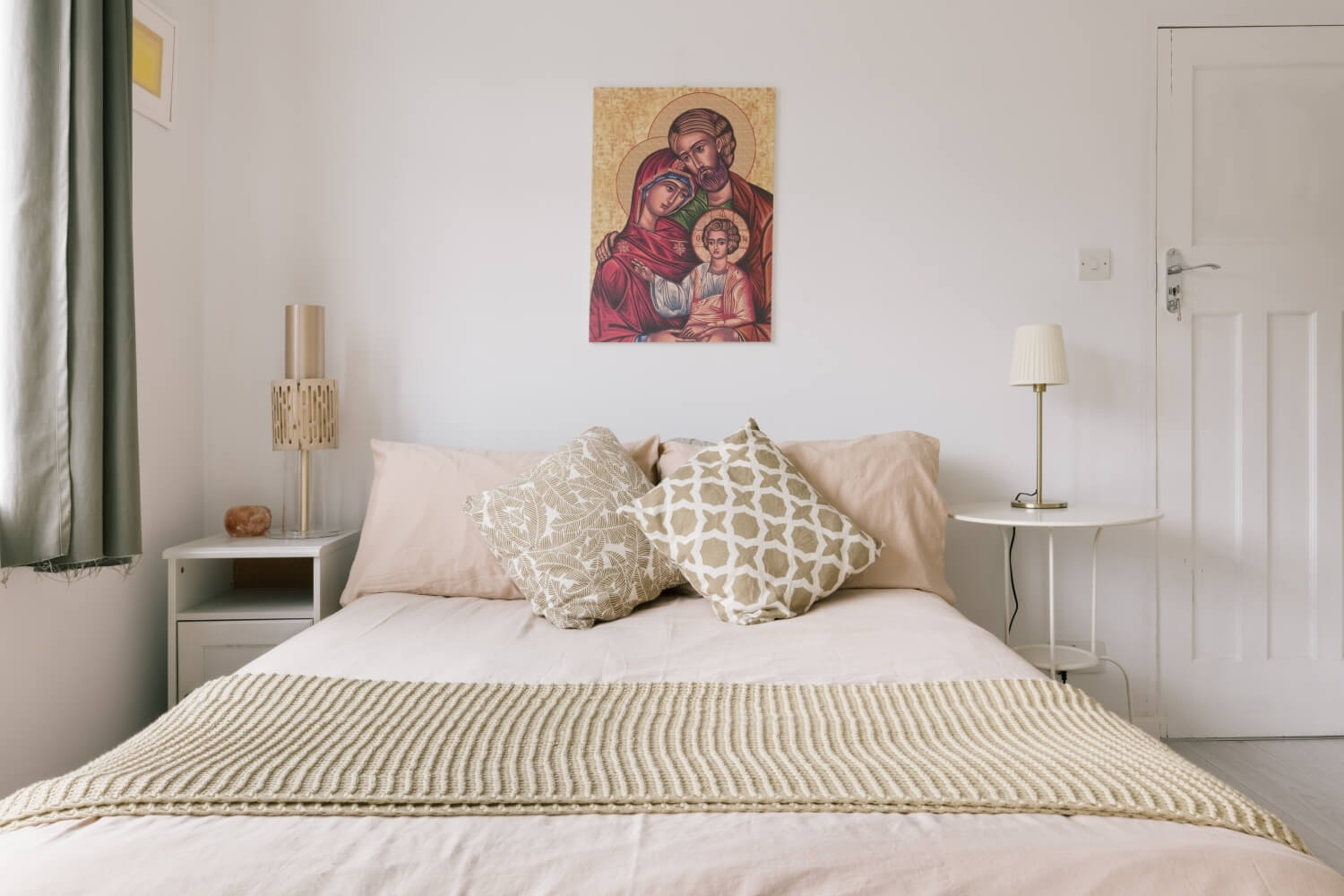Delphine Chui
An interview with Delphine Chui, creative content creator and founder of CareDogs Charity.
October, 2021








We talk to Delphine Chui, an award-winning cross-platform creative, specialising in client briefs and branded content.
With over 10 years of experience as a magazine journalist, spreading across all Hearst titles and platforms, including commercial lead at interior mags such as Elle Decoration, Delphine knows an inspiring space when she sees one. Taking her creative career freelance and founding CareDogs Charity, Delphine talks us through her career journey and how remote working has influenced the way she zones, furnishes and decorates her space, at home.
Could you tell us a little about yourself and your background as a cross-platform creative?
I started my career in online magazine journalism back in 2010, writing about culture and fashion – which quickly led to more roles in entertainment and lifestyle across print and digital. I landed my first paid internship at GQ, before moving onto women’s magazines and feature content.
My first decade of work saw a social media boom, Instagram was just starting, and other apps were growing at a rapid pace. This made me realise, I really do need to become cross-platform; I had to adapt to rising tech trends, by the very nature of the industry. A few years ago, I made the jump from editorial to branded content where I was working with big budgets and client briefs which enabled me to be more creative than ever; ideating concepts that work for a client, as well as the magazine brand and their audience.

As a now-freelancer, could you give us an insight into your day-to-day, what are your focuses?
My day-to-day revolves around walking my dog and working-from-home! So it really means I have to work around timing and giving myself a routine. Saying that, the best thing about being freelance is not being tied down to the 9-5 schedule. I work best first and last thing so it allows me to work at my most productive pace. And it complements the seasons as now we’re entering winter, I’m moving my main dog walk of the day and any outdoor errands to the light hours while embracing staying cosy and doing laptop work as the nights draw in. It’s nice to have my own routine, especially as no given day is the same: one day I could be on set for a shoot and the next, getting commissioned on the spot to write an article or working on community outreach for my charity, CareDogs.

We can tell Nola and Dillon are a great part of your day too. Can you tell us about CareDogs charity and how it came about?
Nola (my rescue Macedonian mongrel) and Dillon (my adopted Calico cat) are great flatmates! I’ve always been moved by how much living with a pet adds to our everyday quality of life so the idea came to me a few years ago in conjunction with awareness of the ever-growing problem of loneliness and social isolation among the older population in the press. I wanted to help older people adopt rescue dogs in need of their forever homes (especially dogs over the age of 7 who stay in shelters significantly longer than their younger counterparts.) But I didn’t know whether the idea was even viable. I managed to get a call with the Deputy Head of Operations of Battersea Dogs and Cats Home, and pitched him the idea. I said ‘Do you think this has legs?’ and he replied saying ‘Yeah I really do’. Then Covid happened! Older people were shielding and the demand for rescue dogs was higher than ever. But this has all really exacerbated why the charity is necessary.
CareDogs has also recently launched a befriending service for clients who aren’t able to live with a dog full-time but would still benefit from canine companionship – as we wanted to be as inclusive as possible. Our first successful pairing between a 79-year-old widow and a 10-year-old collie cross earlier this year was a huge milestone for the charity!

How has this career journey inspired your interior at home?
As a magazine editor, I had the privilege of being exposed to a lot of different interiors and inspiring spaces. I also got to go to a lot of hotel openings which enabled me to spot particular styles that I liked. I’m all about style and substance, as well as mixing high, low and vintage. I’ll splurge on a few key pieces like a floor lamp or dressing table, but I’ll also get basics from somewhere like IKEA, elevating them with different handles, knobs or finishes. I also love taking anything old and refreshing it back into use.

How do you go about making your edit and how do you like your space to feel?
I really don’t like mess or disorder. Functional fashion is my go-to when it comes to my wardrobe – and it’s the same with my interiors. I don’t like to have many pieces out in my home. I really think this has enabled me to edit out almost all unnecessary items. I ask ‘what is this item's purpose?’, ‘Is this something that ‘sparks joy’ as Marie Kondo would say, or is this something I am going to use?’. Because I am a little bit of a tidy freak, I still want my space to feel homely and cosy so I try to avoid it from feeling clinical by bringing in different textures, cushions and blankets. I still want it to feel lived in.

Since working from home, how do you think this impacts on how you write or create?
My tidy nature has definitely helped with concentration and focus - tidy room, tidy mind’, as they say. Working from home, in a small apartment can leave you stuck in a rut or prone to procrastination, so it’s important for me to intentionally zone my spaces. I never sit on my sofa for work and I don’t have any electronic devices in my bedroom so these remain pure relaxation spaces. I mainly work from my dining table where I have a standing desk extension I whip out during work hours and hide under my TV cabinet in the evenings and weekends. I think I am really fortunate that this flat gets a great amount of natural light. It works well for zoom calls and leaves me feeling energised when I need to sit and write because I intentionally face the window now.
I’m strict about doing tasks as soon as I think of them, not letting myself get distracted by household chores and being open to drawing inspiration from lesser expected places: voice notes with friends, a random social media post or a thought that pops up during a dog walk. WFH also allows me to feel less constrained to a routine – and that in itself can really fuel creativity.

From your experience as a branded content lead covering home and interior titles, can you define a best-in-class interior?
Interiors with a mix of high and low, craftsmanship and price points of furniture work really well, in my opinion. If you go somewhere and it looks very expensive and untouched, it doesn't feel relatable or accessible. Therefore I really love interior designers who mix it up, with textures and have a piece that anchors a room like a statement sofa, finishing the room with pieces that are a little more eclectic. Those who can make a hybrid of different styles work together are best in class!
My personal taste is all about minimalism and natural textures so some of my favourite interior designers include Sandra Benhamou, who is all about beautiful woodwork and neutral colours, and New York married couple Carrier and co who are known for their timeless-yet-contemporary, light-filled and airy aesthetic. For a little more colour and playfulness, British interior designer Abbie de Bunsen has a really fun, feminine touch.
Are there any interiors in London you find particularly inspiring?
I’ve not really been out over the last year so it’s difficult to tell you any new, unique places! But, when it comes to attention-to-detail, the Boglione clan, behind Petersham Nurseries, have got it down. I’m not even a plant person but they make me want to bring horticulture into my home. Bringing the outside in is a trend that is never going away – they do it so well.
I also love architecture – with Georgian houses being my favourite, so I’d have to say The Prince Akatoki hotel. Based inside a Georgian townhouse, this Japanese-inspired space is a pocket of zen in the city. Neutral tones, understated artwork and a bar stock full of sake – what’s not to love?
Deep dive in your space. Tell us a bit about your personal home and style, what made you choose some of the main elements?
Minimalism, Scandi design and natural textures really inspire my space. I used to go somewhere in Scandinavia once a year with my sister – and everytime we would come back with some form of home furnishing, like a blanket or something that could fit into our suitcase. Swedish design. It feels so curated and considered! While I’m not green-fingered (I managed to kill a terrarium once), I love touches like my floating wooden shelf and solid wood stools, which help bring in a subtle forest-bathing feel.
As well as nature, the most impactful thing in my life is my Catholic faith, which you’ll find obviously reflected in my home. I really enjoy sacred art, especially Byzantine-style which is a big departure from my usual minimalistic taste – but it brings beautiful jewel tones and history into my space while reflecting my faith and values.
Is the quality of home textiles important to you, in ensuring a comfy yet stylish home?
Home textiles are actually the one element I will really invest in. I’m pretty passionate about sustainability and fairtrade so buying materials like organic cotton and bamboo (which use far less chemicals in the production process) is high on my list of priorities. I try to avoid anything that is synthetic and limit how much plastic or metal I have in my home, choosing natural and good quality materials like pine wood, glass and rattan instead. Also because of the animals, I don’t want them to be on materials that aren't natural or hypoallergenic.
Bedding is something I always invest in. It changes the feeling of relaxing so it’s always worth getting good bed sheets as you use them everyday!
We understand you’re all about sustainability and being an ethical consumer, how does this impact on how you decorate and furnish your space?
It means I don’t buy as much as I would probably like - I try to buy less or better. It’s made me more of a mindful consumer for sure. This is why you’ll find ‘hand-me-downs’ in my apartment like my sister’s old sofa and my parents’ old pendant lampshade in my living room. I like that this gives my furniture a story. Living with pets has made me a lot less precious about material goods while also upping my imagination and ability to mend things: I use a razor to get rid of cat-scratched bobbles on my settee and I trimmed my curtains from full-length to windowsill length after a certain puppy gnawed on their ends. ‘Repair, reuse, recycle’ is my general ethos to everyday life.
Do you have any ‘go to’ places that you always visit to shop for home pieces?
As a South London local, I need to shout out Crystal Palace’s antique scene, it’s treasure trove of rare furniture finds and bargain designs (an Eames chair was once sold for £28!). I love getting detailed pieces, like my whisky decanter and tumbler set, from the market. You never know what you might find!
